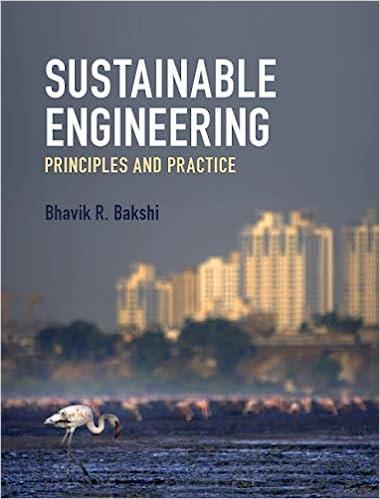The Haber-Bosch process produces ammonia (NH3) by means of the following reaction: N + 3H 2NH3. For
Question:
The Haber-Bosch process produces ammonia (NH3) by means of the following reaction: N + 3H 2NH3. For a process to be economically feasible, 98 percent of the hydrogen moles fed to the entire system need to be converted into ammonia. Also, the least expensive reactor design converts 10 percent of the hydrogen into ammonia. The following questions address the effect of the system boundary on reactor design.
1. Consider only a single reactor in which this reaction takes place. To produce 100 moles per hour of ammonia, calculate the amount of hydrogen and the minimum amount of nitrogen that must be fed to the reactor to obtain the specified overall conversion of 98 percent.
2. Now consider a reactor followed by a separator, and recycle streams that return unreacted hydrogen and nitrogen back to the reactor. Is it possible to operate this reactor at 10 percent efficiency while achieving 98 percent overall conversion and 100 moles per hour of ammonia production?
3. What does the difference in reactor efficiencies for these two cases tell us about the disadvantages of considering only part of a system in the design?
Step by Step Answer:

Sustainable Engineering Principles And Practice
ISBN: 9781108420457
1st Edition
Authors: Bhavik R. Bakshi





